Understanding TikTok Influencer Rates: A Comprehensive Guide to Earning and Charging
I lead the paid marketing team at Billo, focusing on performance, testing, and growth that scales.Over the past 6 years, I’ve worked across digital marketing - from running campaigns to building the strategies and systems behind them.What drives me is problem-solving. I like turning complex questions into simple, testable answers, and making decisions that actually drive impact.
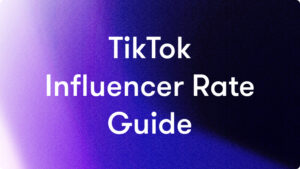
Since its global launch, TikTok has not only reshaped how content is created and consumed but has also established itself as a vital arena for influencer marketing.
With its unique format and highly engaged user base, TikTok offers unprecedented access to a young, dynamic audience, making it a prime target for brands looking to expand their reach and influence.
Understanding TikTok influencer rates is crucial for both influencers and brands aiming to engage in effective partnerships. As the platform continues to evolve, so too do the financial dynamics of collaborations.
Influencers need to know how to value their offerings, while brands must grasp what constitutes a fair price for the visibility and engagement they hope to achieve.
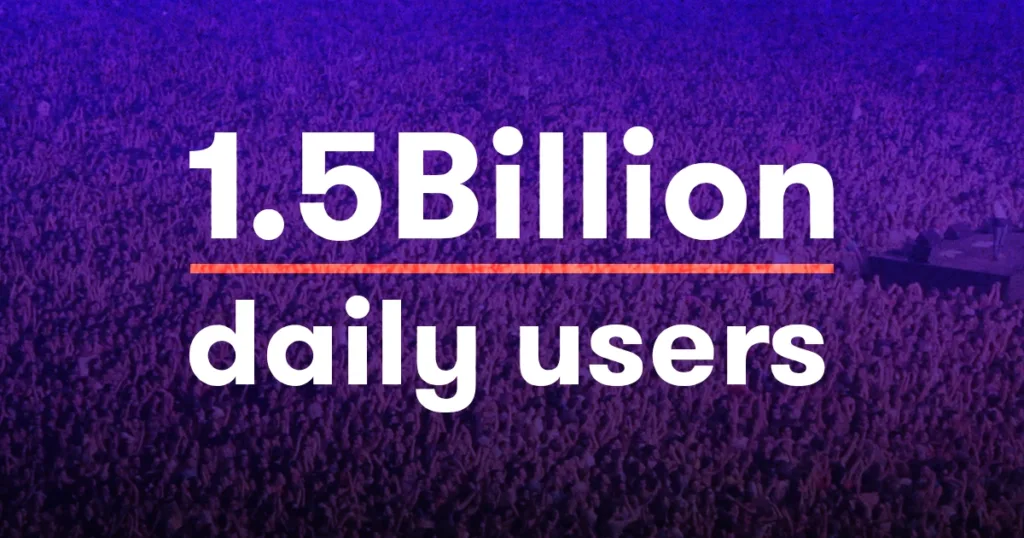
This discussion revolves around several key terms that are essential for navigating the TikTok influencer marketplace:
- TikTok influencer rates: The compensation influencers receive for their collaboration with brands, which can vary based on a myriad of factors including their reach, engagement levels, and the specific campaign requirements.
- Per video rate on TikTok: Often, influencers are paid per video post, and this rate can differ greatly depending on the influencer’s audience size and engagement metrics.
- How much should I charge for a TikTok video?: A common question among TikTok creators, this reflects the need for a clear understanding of one’s market value to ensure fair compensation.
- TikTok rates: This broader term encompasses the various pricing structures and ranges that can apply to different types of content and campaign engagements on TikTok.
- How much do TikTok sponsors pay?: Understanding this helps influencers and brands alike to gauge the going rates for sponsorships, helping them to budget and plan campaigns accordingly.
- TikTok rates for influencers: A specific focus on how influencers can strategize their pricing according to their tier (nano, micro, macro, celebrity) and industry standards.
As TikTok continues to dominate the social media sphere, the importance of understanding these aspects of influencer marketing cannot be overstated. The subsequent sections will delve deeper into each of these areas, providing a comprehensive guide to mastering TikTok influencer rates.
Whether you’re an aspiring influencer or a seasoned marketing executive, gaining insights into these rates will equip you with the tools needed for successful and mutually beneficial partnerships.
Introducing the TikTok Marketplace
TikTok has firmly established itself as a dynamic platform where influencers and brands converge to create viral and engaging content. This platform differentiates itself by offering a raw, real-time, and often unfiltered glimpse into the lives and creativity of its users.
It’s this authenticity that has precisely propelled TikTok beyond just a platform for dance videos and lip-syncing to a powerful tool for influencer marketing.
Statistics on TikTok’s User Engagement and Growth
TikTok continues to demonstrate remarkable growth, solidifying its position as a leader in the world of short-form video content. As of the latest reports, TikTok boasts over 1.5 billion active users globally, illustrating its broad appeal across various demographics.
The average user engagement has also intensified, with users now spending approximately 68 minutes per day on the platform. This engagement level represents a significant increase and highlights the app’s addictive quality and its effectiveness in retaining user attention.
Furthermore, TikTok has surpassed 3 billion downloads worldwide, showcasing its extensive reach and the universal appeal of its content format. This widespread adoption makes it an invaluable platform for influencers and brands aiming to expand their digital footprint across a diverse, global audience.
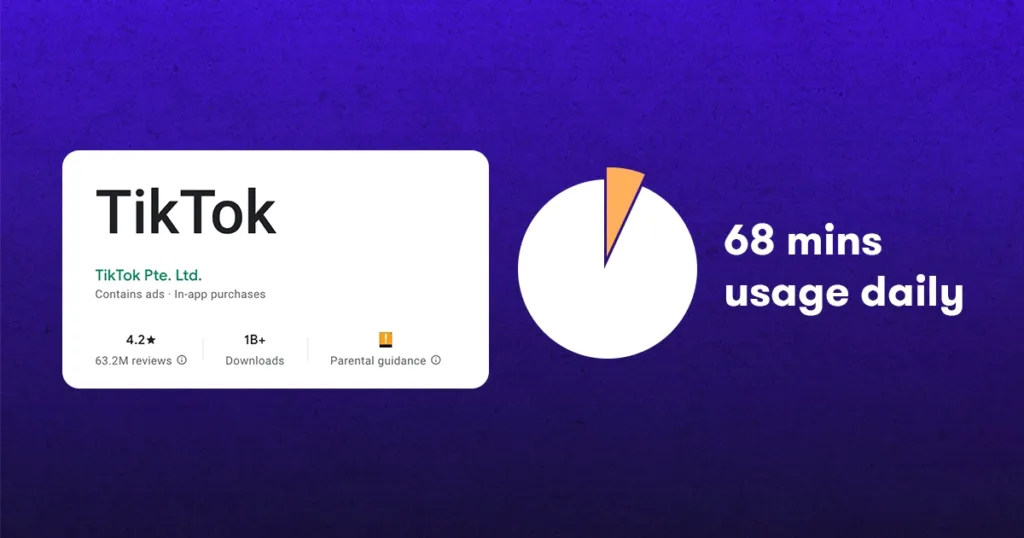
Diversity of TikTok’s Content and Its Influence on Rates
The diversity of content on TikTok is vast, ranging from entertainment to educational content and everything in between. This variety allows influencers to carve out unique niches, which in turn influences the rates they can command.
For instance, influencers who specialize in niche markets like beauty tutorials or financial advice may attract more targeted, and potentially more lucrative, brand partnerships compared to those producing more general content.
Additionally, the viral nature of TikTok’s algorithm means that even influencers with smaller followings can achieve substantial reach if their content resonates well with the audience, potentially increasing their rates.
TikTok Influencer Rates Explained
TikTok influencer rates vary widely and are negotiated based on several factors that reflect an influencer’s ability to drive engagement and deliver measurable outcomes.
These rates are not only indicators of the influencer’s current market value but also provide a blueprint for brands on how much they should expect to invest when seeking to collaborate with TikTok creators.
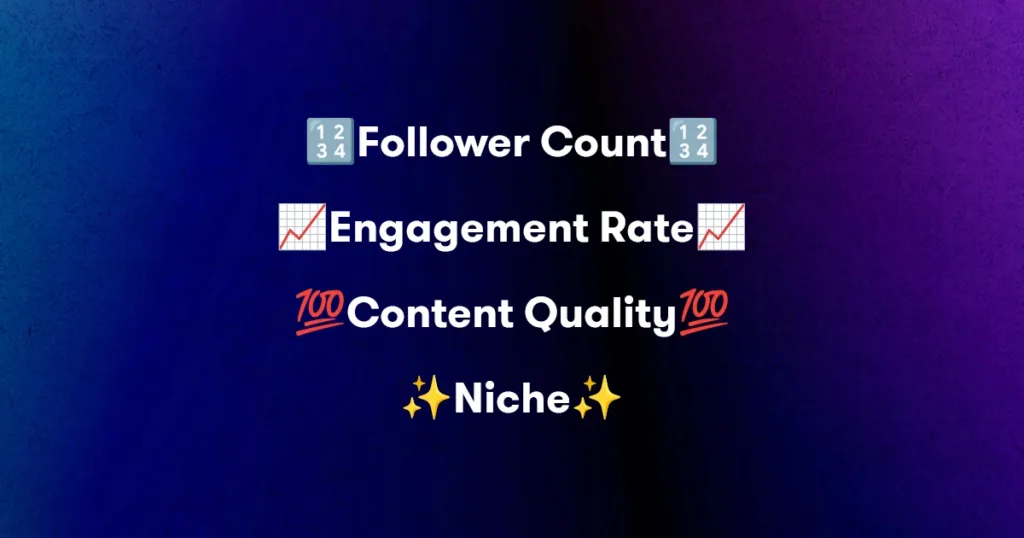
Factors Influencing Rates
- Follower Count: Generally, the more followers an influencer has, the higher their rate. This is because a larger follower base often translates to greater reach and influence.
- Engagement Rate: Engagement rate is a critical measure that includes likes, comments, shares, and the overall interaction that followers have with the content. High engagement rates suggest that the audience is actively interacting with the content, making it more valuable for brands.
- Content Quality: High-quality, original content tends to attract more viewers and retain their attention longer, which is highly appealing to brands. Influencers who consistently produce high-quality content are likely to charge more.
- Niche: Influencers who operate within specific niches often have a more dedicated and engaged audience, allowing them to demand higher rates. Specialized content can be more attractive for brands looking to target particular demographics.
Common Rate Structures on TikTok
- Per Video Rate: This is the most common method where influencers are paid a flat rate for each video they produce for a brand. Rates can vary depending on the factors mentioned above.
- Per Campaign: Some deals involve multiple videos or actions (like posts and shares), where influencers are paid for the entire campaign rather than individual posts.
- Long-term Partnerships: These arrangements benefit both parties as they foster deeper collaboration and often involve a series of campaigns or a continuous endorsement over a longer period, usually resulting in better compensation for the influencer.
TikTok video ad campaigns that can help you go viral
Per Video Rate on TikTok
The per video rate is a critical component of the compensation structure for TikTok influencers. It directly reflects how much an influencer earns for each piece of content they create on behalf of a brand.
Understanding how these rates are determined, examples of what different influencers might earn, and effective negotiation strategies can help both influencers and brands make informed decisions.
Per video rates on TikTok are influenced by several factors, with the primary determinants being the influencer’s reach, engagement rate, content quality, and niche relevance. The process of setting these rates often involves:
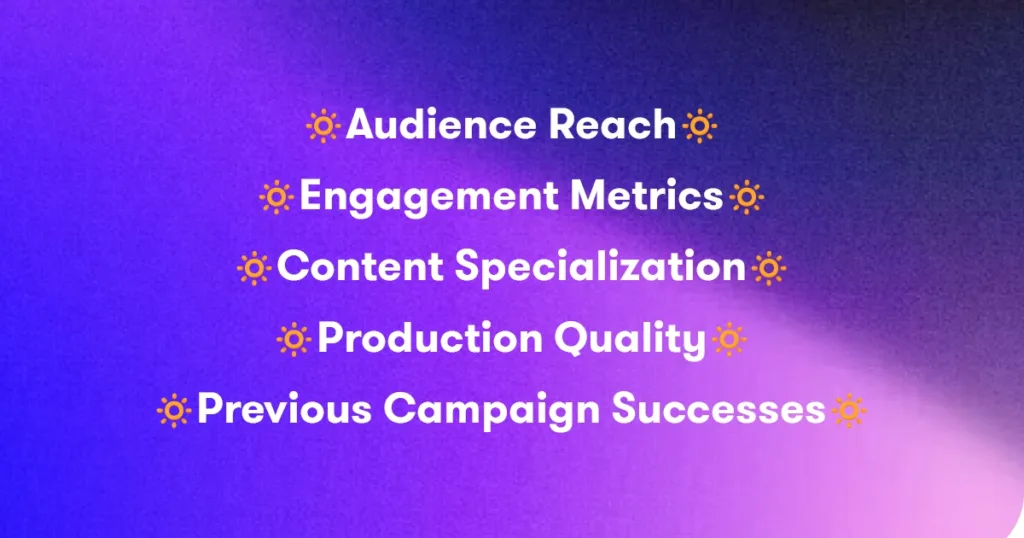
- Audience Reach: Influencers with larger followings generally command higher rates due to the increased visibility they offer.
- Engagement Metrics: Beyond just numbers, brands pay a premium for influencers whose followers are actively engaging with their content—measured through likes, comments, and shares.
- Content Specialization: Influencers who produce content in specific, often lucrative niches (like tech gadgets, luxury fashion, or fitness) can charge more due to their targeted audience appeal.
- Production Quality: Higher-quality videos that require more time, professional editing, or special equipment can justify higher rates.
- Previous Campaign Successes: Influencers who have a track record of successful brand collaborations can leverage this history to negotiate higher rates.
How to Negotiate Per Video Rates and Common Negotiation Tactics
Negotiating rates is both an art and a science, involving clear communication, understanding market value, and sometimes, strategic compromise.
Know Your Worth
Influencers should come to the negotiation table armed with data about their audience demographics, engagement rates, and examples of past successful collaborations.
Scope of Work
Clearly define what the creation of the video will entail. If the video requires extra effort or unique content, influencers should argue for higher compensation.
Exclusivity and Rights
If a brand wants exclusivity or extended rights to the content, this should drive the price up, as it limits the influencer’s ability to engage in other partnerships.
Performance Bonuses
A common tactic is to agree on baseline rates with potential bonuses for performance metrics like views, shares, or direct sales generated.
Counteroffers and Flexibility
Always be prepared to make a counteroffer and demonstrate flexibility by offering package deals for multiple videos.
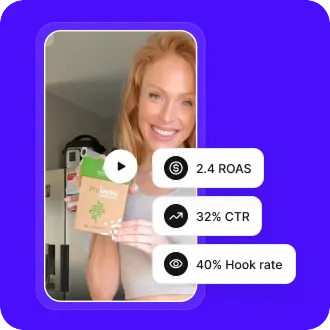
Explore the Latest TikTok Ad Trends
How Much Should I Charge for a TikTok Video?
Determining how much to charge for a TikTok video is a pivotal decision for influencers. It requires a balance between understanding your market value and aligning it with industry standards while considering the specific needs and budget constraints of brands interested in a partnership.
This section provides clear guidelines for influencers on setting their rates, understanding their unique value proposition, and utilizing tools to accurately estimate their worth.
Guidelines for Influencers to Set Their Rates
- Evaluate Your Following: Start by assessing the size of your audience. Generally, a larger follower count can command higher rates, but it’s not just about the numbers—it’s about the right numbers. Target audience alignment with a brand’s customer base can increase an influencer’s value.
- Assess Engagement Levels: Engagement rate (likes, comments, shares) often carries more weight than sheer follower numbers because it indicates that your audience is not only large but active and potentially receptive to sponsored content.
- Consider Content Quality and Production Costs: High-quality, well-produced content that requires significant time and resources should be priced higher. Consider your costs for equipment, editing software, and any auxiliary content needs when setting rates.
- Frequency and Exclusivity: If a brand requests exclusivity (preventing you from partnering with competitors) or a high frequency of posts, rates should reflect this additional commitment and the potential limitation on other partnerships.
Importance of Understanding Your Value Proposition to Brands
Every influencer brings a unique set of attributes that constitute their value proposition to brands. This includes:
- Audience Demographics: Understanding the specifics of your audience (age, location, interests) is crucial. Brands are willing to pay more if your followers align closely with their target market.
- Unique Style and Voice: Your individual style and how you communicate can strongly influence a brand’s desire to work with you, particularly if your presentation style resonates well with their branding.
- Proven Track Record: Evidence of previous successful collaborations that have led to tangible results (e.g., increased brand awareness, sales boosts) can significantly increase your leverage in negotiations.
Tools and Calculators Available for Influencers to Estimate Their Worth
Several online tools and calculators can help influencers gauge what to charge for a TikTok video:
- Social Bluebook: This tool offers value assessments based on your social media profile’s reach and engagement, providing a starting point for rate negotiations.
- Influencer Marketing Hub’s TikTok Money Calculator: Aimed specifically at TikTok, this calculator estimates potential earnings from your TikTok account by analyzing your engagement and reach.
- HypeAuditor: Provides detailed analytics on your audience quality and engagement rates, which can help in setting realistic pricing based on how your audience interacts with your content.
Instagram vs TikTok for business
Understanding TikTok Rates for Different Influencer Tiers
Navigating TikTok influencer rates requires an understanding of how these rates differ among various influencer tiers.
Influencers are typically categorized into four tiers based on their follower counts: nano, micro, macro, and celebrity. Each tier commands different rates due to varying levels of reach, engagement, and influence.
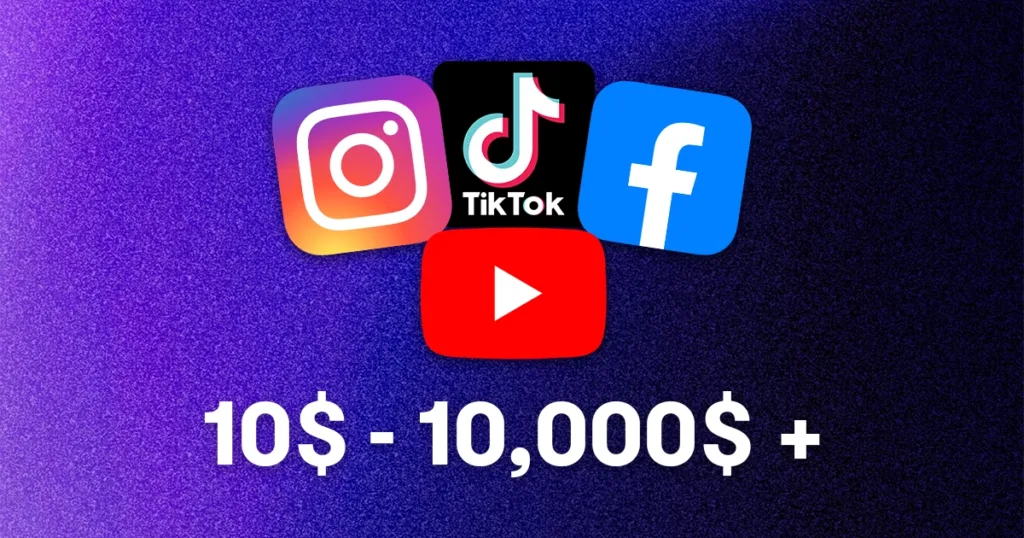
Breakdown of TikTok Rates by Influencer Tier
Nano Influencers (1,000 – 10,000 followers):
These influencers have smaller, but often highly engaged audiences. Brands value nano influencers for their authentic connections and high trust levels among followers. Typical rates for nano influencers range from $50 to $200 per video.
Micro Influencers (10,000 – 100,000 followers):
Micro influencers strike a balance between reach and engagement, making them highly effective for campaigns aiming for specific niches. Their rates typically range from $200 to $800 per video, depending on the specifics of the engagement and campaign requirements.
Macro Influencers (100,000 – 1 million followers):
With larger followings and more influence, macro influencers are sought after for their ability to reach a broad audience. Rates for macro influencers can vary significantly but generally range from $800 to $5,000 per video.
Celebrity Influencers (1 million+ followers):
These influencers have vast reach and can drive significant brand awareness and sales. Celebrity influencers on TikTok can charge anywhere from $5,000 to $50,000 or more per video, depending on their celebrity status and the campaign scale.
How Rates Vary with Each Tier and Why
Rates vary across tiers primarily due to the reach and engagement that each tier can provide. Higher-tier influencers can demand higher rates due to their ability to influence a larger segment of the audience.
Additionally, the niche and audience demographic of the influencer play crucial roles in determining rates.
For instance, influencers who cater to high-value niches like luxury goods or specialized technology can command higher rates than those in more saturated markets like general entertainment.
Examples of Typical Earnings for Each Tier
- Nano Influencers: E.g., A nano influencer specializing in local gourmet food reviews may earn $150 per video to feature a new restaurant.
- Micro Influencers: E.g., A micro influencer known for her DIY home decor tips might charge $500 per video to promote a new line of eco-friendly paint.
- Macro Influencers: E.g., A macro influencer who focuses on fitness and wellness could earn $3,000 per video to participate in a fitness challenge sponsored by a sports brand.
- Celebrity Influencers: E.g., A celebrity influencer famous for comedic content might command $20,000 to integrate a brand into one of their skits.
How Much Do TikTok Sponsors Pay?
Understanding the financial dynamics of sponsorships on TikTok is crucial for both influencers and brands. Sponsorship payments vary widely based on several factors, including the influencer’s tier, the campaign’s complexity, and the expected outcomes.
Sponsorships on TikTok can take various forms, from simple product mentions in videos to complex, integrated campaigns involving multiple posts and cross-platform promotion. The terms of these partnerships are often negotiated to reflect the specific goals of the brand, such as increasing brand awareness, launching new products, or driving direct sales.
Average Payment Ranges Based on Industry Reports and Surveys
According to industry reports and surveys, typical sponsorship payments on TikTok can range as follows:
- Nano Influencers: $100 – $500 per campaign
- Micro Influencers: $500 – $2,000 per campaign
- Macro Influencers: $2,000 – $20,000 per campaign
- Celebrity Influencers: $20,000 – $200,000+ per campaign
Maximizing Your Earnings as a TikTok Influencer
For TikTok influencers looking to maximize their earnings, it’s crucial to not only enhance one’s appeal to potential sponsors but also to adopt strategies that broaden income streams.
Here’s how influencers can increase their value on the platform and expand their earning potential.
Strategies for Enhancing Your Value on TikTok
- Content Diversification: Regularly introduce new types of content to keep the feed fresh and engaging. Experiment with different video formats, such as tutorials, behind-the-scenes looks, or Q&A sessions, to see what resonates most with your audience.
- Trend Participation: Stay abreast of current trends on TikTok and participate in viral challenges when appropriate. Being seen as a trendsetter or an early adopter can increase your visibility and attractiveness to brands.
- Collaborations: Partner with other TikTok influencers to tap into their audiences. This can help cross-pollinate followers and increase your reach. Choose collaborators who align with your brand and content style to maintain authenticity.
- Audience Engagement: Actively engage with your followers through comments, live streams, and personalized content. Acknowledging your audience builds loyalty and can lead to higher engagement rates, making your profile more attractive to sponsors.
Tips on Improving Engagement Rates and Follower Count
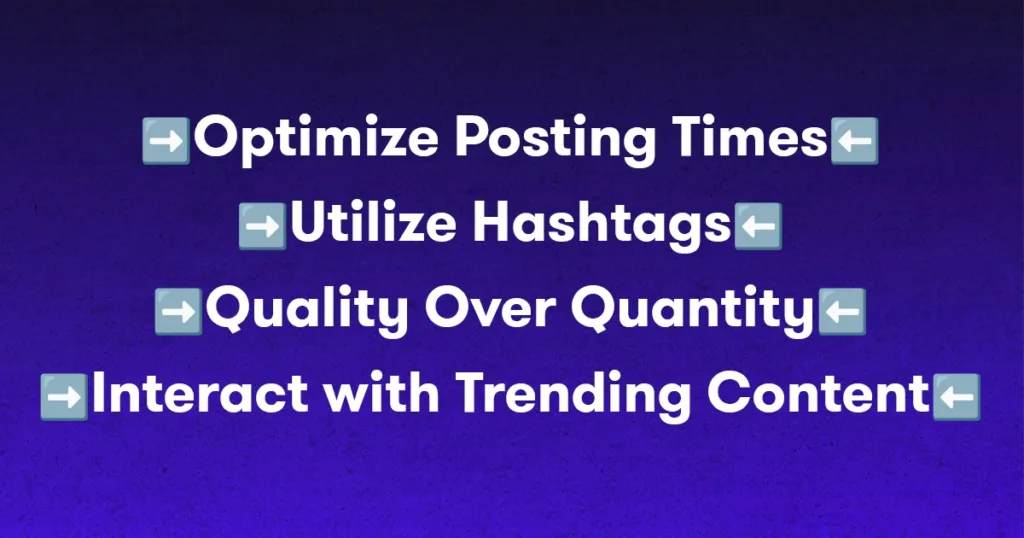
- Optimize Posting Times: Post content when your audience is most active. Utilize TikTok analytics to understand when your followers are online and more likely to engage with your content.
- Utilize Hashtags: Use relevant hashtags to increase the visibility of your videos. Research trending and niche-specific hashtags to attract viewers interested in specific topics.
- Quality Over Quantity: Focus on creating high-quality content that provides value. Videos that are well-produced, entertaining, or informative are more likely to be shared and recommended by TikTok’s algorithm.
- Interact with Trending Content: Comment on popular videos and engage with trending topics to increase your visibility among those browsing trending feeds.
Advice on Diversifying Income Streams as a TikTok Influencer
- Merchandising: Develop your own line of merchandise. This could be apparel like custom jackets, custom t-shirts, accessories, or digital products that resonate with your brand persona. Merchandise sales can provide a significant supplementary income stream.
- Affiliate Marketing: Join affiliate marketing programs where you can earn commissions for products sold through your referral. Promote products that align with your content and audience interests.
- Host Paid Workshops or Webinars: If you have expertise in a particular area, consider hosting workshops or online courses. For instance, if you’re a fitness influencer, you could offer paid virtual training sessions.
- Platform Monetization Features: Take advantage of TikTok’s monetization features, such as live gifts and the TikTok Creator Fund, which can provide additional revenue based on engagement and views.
- Sponsored Content: Beyond standard brand deals, explore opportunities for long-term sponsorships or ambassador roles that provide a steady income.
Legal and Ethical Considerations Regarding Influencer Rates
Navigating the rapidly expanding world of TikTok influencer marketing requires an understanding of both legal and ethical considerations. This knowledge ensures that partnerships are not only successful but also compliant with regulations and fair for all parties involved.
Clear, detailed contracts are essential. These agreements should outline every aspect of the partnership, including payment terms, content delivery specifications, intellectual property rights, and termination conditions. Having everything in writing minimizes the risk of misunderstandings and disputes.
Influencers are legally required to disclose their relationships with brands. When promoting products or services, influencers must clearly indicate if a post is sponsored, usually by using tags like #ad or #sponsored.
This transparency is mandated by the Federal Trade Commission (FTC) in the United States and similar regulatory bodies worldwide to ensure consumer trust.
Influencers should set rates based on objective criteria such as engagement rates, follower count, and content quality. Ethical pricing means avoiding inflated charges based on deceptive practices or misleading brand expectations about the results of a campaign.
Influencers should partner with brands that they genuinely resonate with or use themselves. Promoting products that the influencer believes in not only helps maintain credibility with their audience but also upholds integrity in marketing.
Regulations are increasingly shaping the landscape of influencer marketing. These regulations aim to protect consumers from deceptive advertising practices and ensure fair competition.
Influencers and brands must stay informed about these laws as they can vary by country and change frequently. Compliance helps avoid legal repercussions and fosters a healthier environment for digital advertising.
Continue learning:
Conclusion
Understanding TikTok influencer rates is more than just about maximizing earnings—it’s about fostering sustainable and equitable relationships in the digital marketing arena. This comprehensive guide has illuminated the various aspects of TikTok influencer rates, from how they are determined to the legal and ethical considerations that accompany them.
Influencers and brands alike are encouraged to use this knowledge for effective negotiations and to develop partnership strategies that are not only profitable but also principled. By staying informed and adaptable, you can navigate the evolving nature of TikTok as a marketing platform successfully.
As TikTok continues to grow and reshape digital marketing, staying updated with these changes will be crucial. The dynamic nature of TikTok demands a proactive approach to both strategy and compliance, ensuring that as the platform evolves, your methods for engagement and monetization remain at the cutting edge.
Whether you are just starting as an influencer or are looking to enhance an established presence, the insights provided here can help you build a successful career on one of the world’s most influential social media platforms.
Get TikTok video ads from your target influencers
Appendix
This section provides additional resources, tools, and services that can help TikTok influencers deepen their understanding of the platform’s economic landscape and effectively manage their collaborations and growth strategies.
Resources for Further Reading and Research
“One Million Followers: How I Built a Massive Social Following in 30 Days” by Brendan Kane – Offers insights on rapid audience growth and engagement strategies across various social platforms, including TikTok.
“Influence: Building Your Personal Brand in the Age of Social Media” by Brittany Hennessy – This book provides a roadmap for influencers looking to build their brand and navigate partnerships with marketers.
“Jab, Jab, Jab, Right Hook: How to Tell Your Story in a Noisy Social World” by Gary Vaynerchuk – Though broader in scope, this book includes valuable lessons on creating content that punches through the noise on any social media platform, including TikTok.
Tools and Software for Analytics and Rate Calculation
Social Blade: Provides detailed analytics that help you track growth trends and compare your metrics against other influencers.
Influencer Marketing Hub’s TikTok Money Calculator: A useful tool for estimating potential earnings based on your TikTok engagement and follower metrics.
HypeAuditor: Offers comprehensive analytics focusing on audience quality and engagement, which can assist in setting accurate rates and understanding your audience better.
List of Consultancy and Management Services for TikTok Influencers
Viral Nation: Offers influencer marketing and talent representation services specifically tailored to social media influencers looking to enhance their brand collaborations.
Upfluence: Provides software and services that help influencers connect with brands and manage their campaigns more efficiently, including tools to facilitate payment and contract management.
NeoReach: Provides end-to-end influencer marketing services, including detailed analytics and campaign management, tailored to meet the needs of both influencers and brands on platforms like TikTok.
Networks for Influencers to Get Paid
Billo: A platform where influencers can connect with brands to create video content for e-commerce. Billo offers a streamlined way for TikTok influencers to find paid opportunities that match their niche and audience.
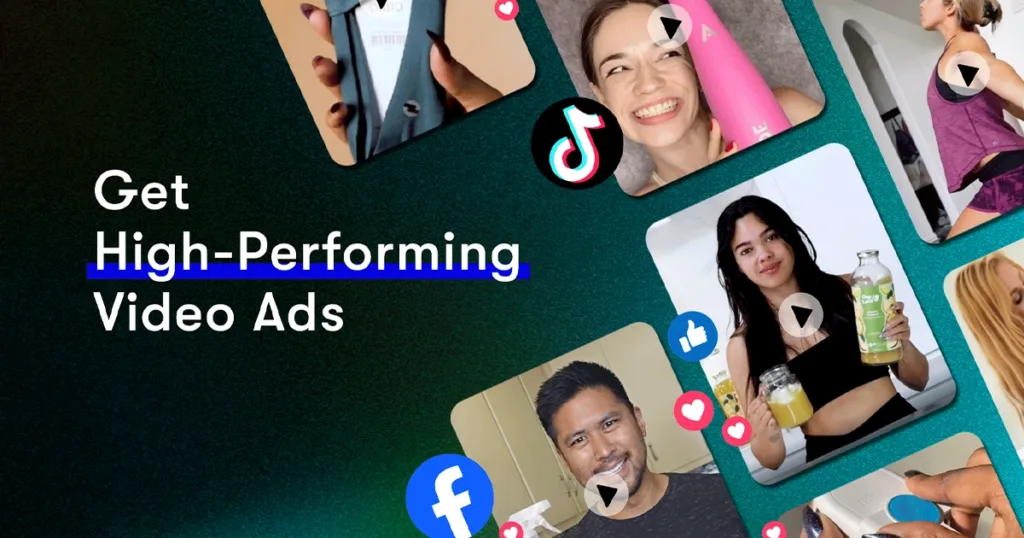
Paid Marketing Lead
I lead the paid marketing team at Billo, focusing on performance, testing, and growth that scales.Over the past 6 years, I’ve worked across digital marketing - from running campaigns to building the strategies and systems behind them.What drives me is problem-solving. I like turning complex questions into simple, testable answers, and making decisions that actually drive impact.

Authentic creator videos, powered by real performance data
22,000+ brands use Billo to turn UGC into high-ROAS video ads.
How to Find Micro Influencers for Your Brand’s...
Looking for micro influencers for your brand’s next campaign? You’re [...]...
Read full articleBeyond the Ad: Influencer Marketing Services for...
Sponsored posts alone won’t cut it in 2025. Global influencer-marketing [...]...
Read full articleTop 20 TikTok Influencers for 2025
Having rapidly evolved from a short-form video app predominantly used [...]...
Read full article



